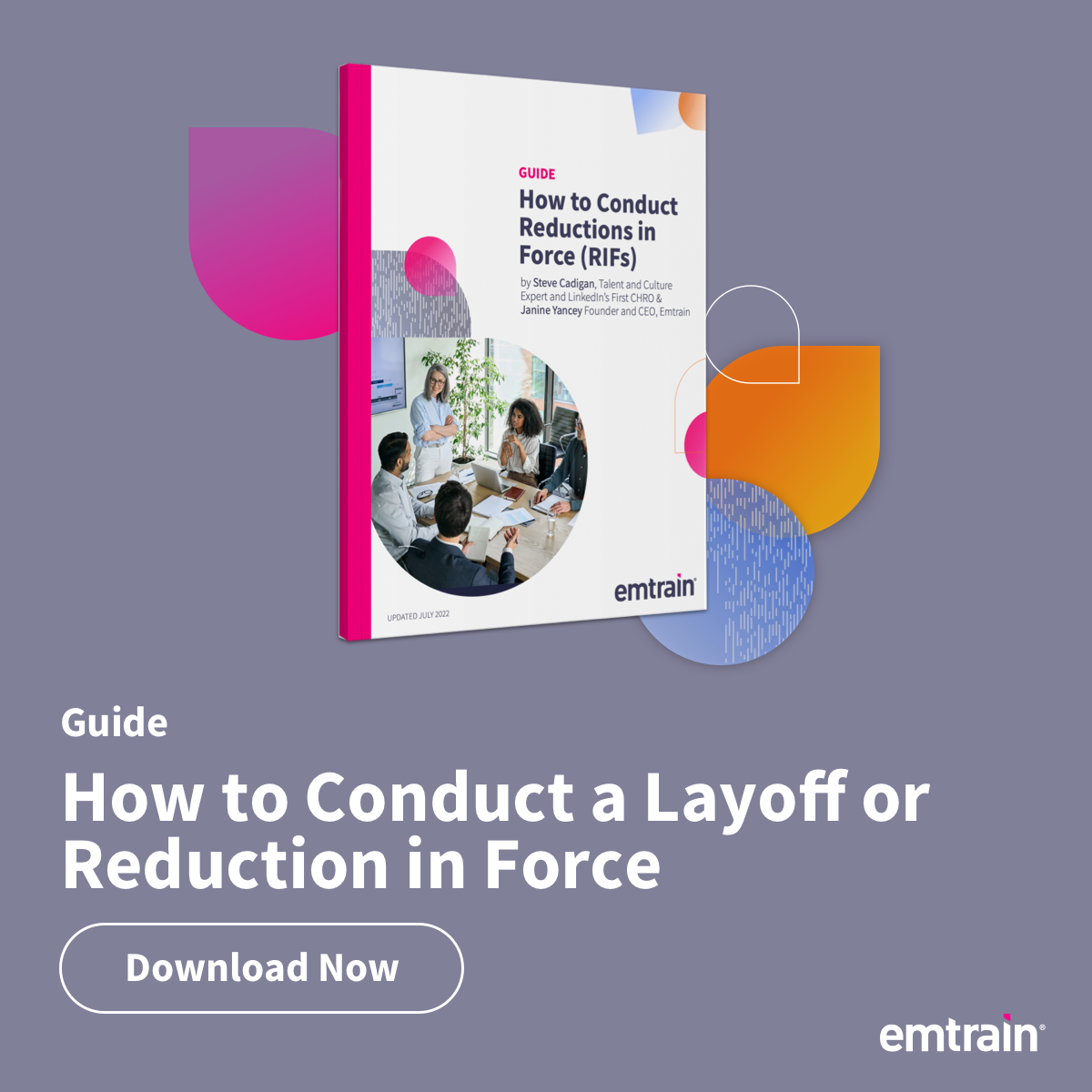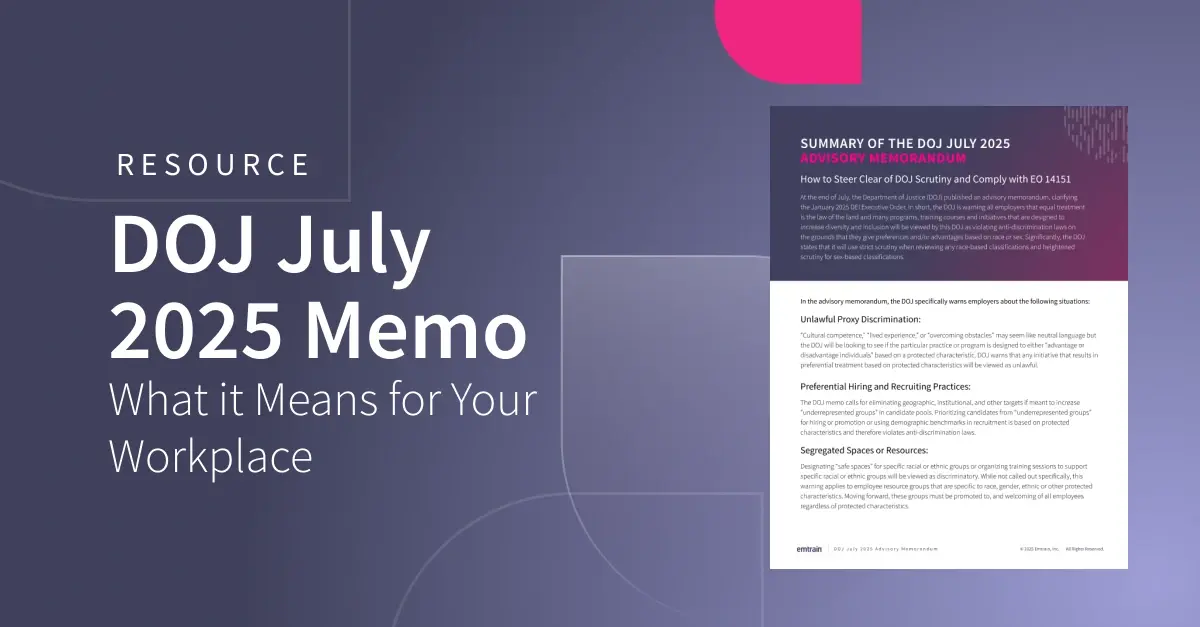
Reductions in a company’s workforce are an unfortunate business reality and, regardless of the severity of the situation, are a difficult process for everyone involved.
From the COVID-19 pandemic to the present looming recession, global economy has taken a turn for the worst and many organizations are faced with the task of conducting mass lay-offs. There are a number of additional factors to take into consideration when conducting a mass lay-off during any type of public crisis. This guide addresses those issues that are specific to remote workers and quarantine conditions, and “normal” factors to account for when conducting a RIF (reduction in force).
Any reduction in force needs to be conducted in a respectful and efficient way to reduce potential damage to your company’s culture and brand image (damage which often can last for months, if not years after the reduction), and to avoid costly legal ramifications for mishandling the reduction.
The process requires extensive planning and preparation to identify and mitigate any risks, and many HR professionals simply don’t have the experience required to handle this well without outside help.
Pulling from years of expertise, we’ve created this guide to teach you how to implement a reduction in force that balances business needs and legal requirements, while also exercising the appropriate care for everyone impacted.
Download this essential resource to receive practical guidance on every step of a workforce reduction, including:
-
- Planning for a reduction in force, including suitable alternatives to a reduction in force
- Determining the size of a workplace reduction, and whether to conduct multiple reductions or one larger reduction
- Developing objective, business-related selection criteria to determine which employees will be impacted
- Legal considerations for reductions in your workforce, including the federal Workers Adjustment Retraining and Notification Act (WARN)
- Best practices for communicating and conducting reductions in your team
- Common mistakes to avoid throughout the workplace reduction process
- Addresses conditions associated to the looming recession in 2022




